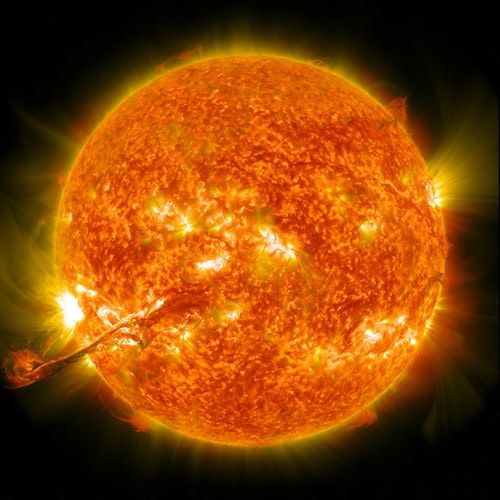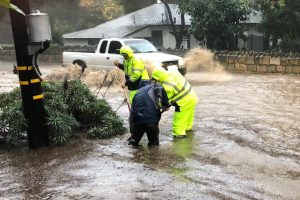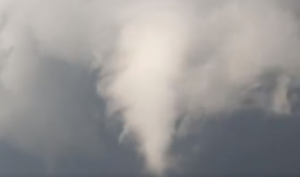A significant solar
flare is
expected to hit Earth on Tuesday or early October 12, it could
potentially affect power grids and generate an aurora in northern latitudes.
The Earth-directed Coronal Mass Ejection (CME)
originates from the Sun, it is caused by a huge burst of electrically conducting plasma.
Also Read | What are geomagnetic storms?
The US National Oceanic and Atmospheric
Administration (NOAA) alerted that there could be weak power grid fluctuations
and satellite orientation irregularities which could
increase drag on craft in low Earth orbit.
Geomagnetic
storms are rated on a scale of 1-5, with 1 being the weakest and 5 having the
most potential for damage.
Also Read | Severe weather conditions prompt tornadoes in Oklahoma, no damages reported
The agency rated the storm as G2 and moderately strong. It is expected to arrive around late 11 october and will
continue until 12 October.
The Meteorological Office (UK national weather service) said that aurora is possible on
11th across much of Scotland, although sightings are unlikely as
clould amounts are increasing.
All Read | All about the high-speed solar winds that create geomagnetic storms
The agency added that there is a slight chance of
aurora reaching the far north of England and Northern Ireland tonight, but
cloud breaks and therefore sightings are more likely in Northern Ireland.
This storm will be relatively weak and the planet
is not ready for a more powerful superstorm.
Storms like these happen once in every 100 years,
and could plunge the world into an internet apocalypse, one study
has claimed.
Also Read | Hurricane Sam: What we know so far about the Atlantic swirl
A Coronal Mass Ejection (CME) involves the emission
of electrically charged matter and accompanying magnetic field into space.
When it hits the earth, it interacts with the earth’s magnetic field and
produces Geomagnetically Induced Currents (GIC) on the crust.
In today’s long-haul Internet cables, the optical
fibre is immune to GIC. But these cables also have electrically powered repeaters
at every 100 km that are vulnerable to damages.
Also Read | Indian Ocean’s new volcano is bigger than the Empire State Building







